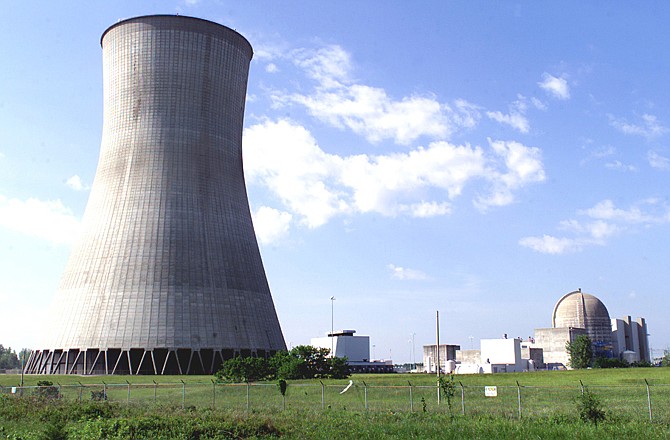Officials from the Callaway Energy Center assured the public has never been in danger after a report revealed 225 "lower-level violations" and seven "higher-level" violations occurred at the nuclear power plant near Fulton from 2000 to 2012.
An Associated Press story last week detailed findings from a 12-year study of all nuclear facilities in the country. The study was commissioned by the U.S. Senate after the 2011 earthquake in Japan that resulted in Fukushima nuclear plant releasing radiation. The U.S. Government Accountability Office, the investigative arm of Congress, conducted the study and analysis.
Cleve Reasoner, vice president of engineering for the Callaway Energy Center, said the violations point to problems the nuclear power plant had, but also point to solutions so the same violations do not re-occur. He added that because of the levels of safety and security at each nuclear reactor site, when one layer fails there are other layers or safeguards to prevent a threat to public safety.
"There's fundamentally within the industry ... an effort to continually improve and continually enhance safety," Reasoner said.
Reasoner said the Nuclear Regulatory Commission sees the low-level violation as "an item (that) has the potential or has consequence."
"In the broader sense, we have layers of safety," Reasoner said.
The regulatory oversight process, he said, calculates the probability of and asses the risks to determine if a violation is "low" or "high." It looks at the procedure or process for operations at the power plant and looks for potential or actual errors. For example, Reasoner said, some tasks must be done on a specific schedule. Missing a scheduled task, or delaying a scheduled task, may lead to a lower-level violation while it did not affect the operations or safety of the site.
He said many of the lower-level violations are about learning from mistakes or learning how to do things better.
The higher-level violations often involve a piece of equipment failing to function properly. He noted an example of one of the many backup diesel generators not working. He said when that diesel engine failed to start up, it wasn't needed. But because it was an equipment failure, it makes the higher-level violation list.
But even when the equipment is needed and fails, Reasoner said the levels of safeguards protect from disaster. For example, a fire in a building separate from the reactor caught fire because of an electrical arc earlier this year. So as soon as that equipment failed, because of the fire, the reactor shut down.
"Anything that is not normal, the reactor is going to shutdown .. and that happens in fractions of a second," Reasoner said.
Reasoner also noted the NRC has two resident inspectors at the Callaway Energy Center, located southeast of Fulton.
"They are constantly grading and inspecting," Reasoner said.
The purpose of that, he said, is to escalate inspections when problems occur.
"If something starts rearing its head, there's more involvement," Reasoner said.
The article written by the Associated Press noted the main problem noted in the analysis of the report stated that variations in violations do not reflect reactor performance, but rather regulators in each region interpreting rules and guidelines different.
The GAO analysis focuses on lower-level safety violations known as "nonescalated." They represent 98 percent of all violations identified by the NRC, which regulates safety at the country's commercial reactors.
The Cooper nuclear station in Brownville, Neb., led all sites in lower-level violations per reactor with 363. The next four were Wolf Creek, in Burlington, Kan., with 266; Kewaunee, in Kewaunee, Wis., 256; Perry, in Perry, Ohio, 256; and River Bend, in St. Francisville, La., 240.
In its official response to the report, the NRC defended the objectivity of its plant assessments. At the same time, it acknowledged the regional differences and promised to look deeper into why they happen.
The report had not been released to the public, but a copy was obtained by The Associated Press.
The GAO analyzed data for 104 commercial reactors, but four permanently shut earlier this year: Crystal River in Florida, Kewaunee, and the two units at San Onofre in California.
The Associated Press contributed to this report.

